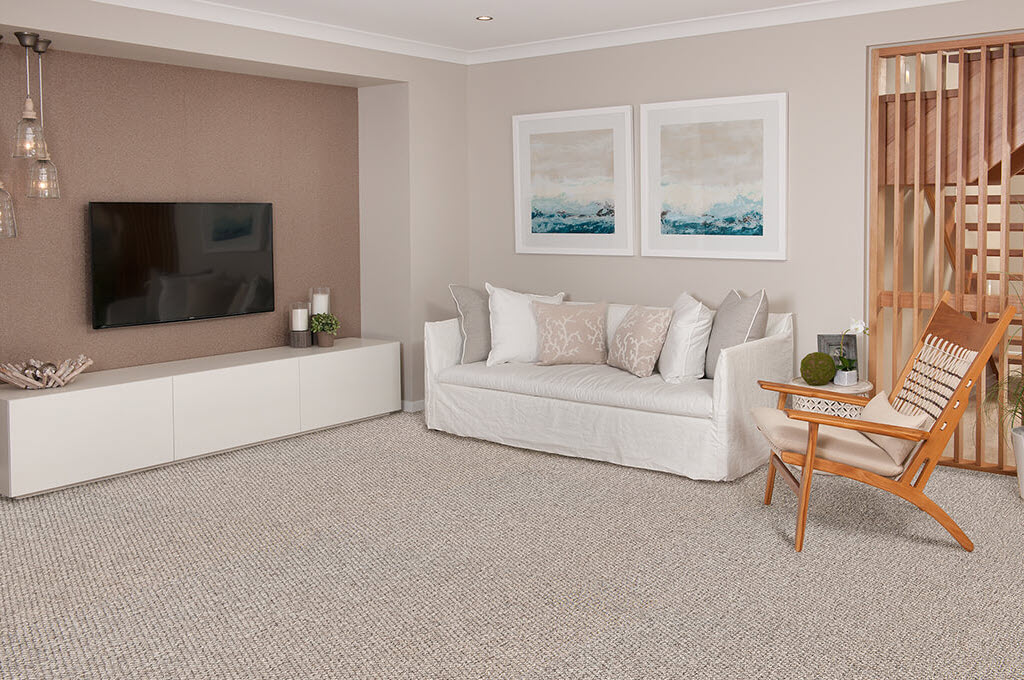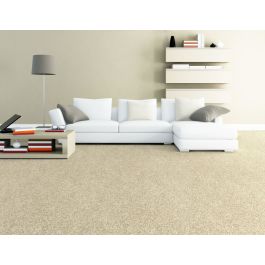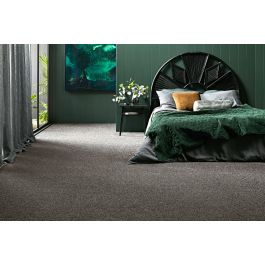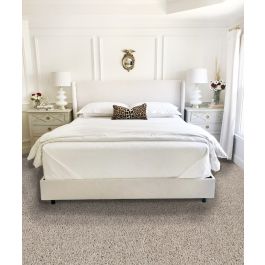Carpet Frequently Asked Questions | Carpet Call
Yes, curtains can provide a thermal insulation by trapping a layer of air between the window and the curtain fabric. This layer of air helps to regulate the temperature of your home and can reduce your energy bills.
Curious to see how different carpet options will look and feel in your home? At Carpet Call, we’re happy to bring our wide range of carpet products straight to your door through our free shop-at-home service. Learn more about our free home measure and flooring quote service online, and fill out the form to book a shop-at-home session at your convenience.
While curtains can be used in most areas of the home, they may not be suitable for use in high-moisture areas such as bathrooms or kitchens. This is because curtains can absorb moisture and may become mouldy or damp over time.
With routine carpet care and preventative maintenance, a new carpet can last for up to 15 years or more. However, it may be time to replace your carpet if you notice any of the following signs:
- Wear and tear, such as frayed or matted carpeting.
- Stains or odours that can’t be removed by professional carpet cleaners.
- Water damage or mouldy spots.
While it may not be essential, many homeowners also choose new carpeting when it’s time to redecorate or repurpose a room.
Yes, curtains can be paired with shutters or blinds to add an extra layer of privacy and light control. You can choose to use curtains alone, or pair them shutters or blinds for added functionality.
Carpets and carpet tile are usually priced by the square metre. At Carpet Call, our carpeting is available from $10 to $120 per square metre. To estimate how much it would cost to purchase carpet for a room, multiply the square metre price by the area of the floor you want to cover. Don’t forget to allow for wastage around the perimeter of the room. In addition to this, you will also need to factor in labour and installation costs.
To get a more detailed pricing estimate for your home, request a free home measure and flooring quote service with Carpet Call.
The best way to clean your curtains will depend on the fabric. Some curtains can be machine washed, while others will need to be dry cleaned. Check the care label of your curtains for specific instructions.
When you’re looking to purchase a new carpet, keep these considerations in mind:
- Excellent customer service: The process of purchasing a carpet will be much less stressful with the help of a supportive team of experienced carpet professionals who can answer all of your questions.
- Product specifications: In addition to considering lifestyle factors like durability needs and colour preferences, pay attention to details such as the fibre content, quality and construction.
- Cost: Carpet is available at a wide range of prices. Looking at styles within your price range will ensure you choose carpeting that’s comfortable for your feet as well as your budget.
- Installation services: Speak with your carpet provider to learn about the available services, ranging from furniture removal to underlay and installation.
For more advice, visit our Carpet Buying Guide. To speak with a flooring specialist, book a free home measure service or call us at 1300 502 427.
When it comes to carpet colour, lighting makes all the difference. The retail lighting at your local Carpet Call store will be different to the lighting in your home. Natural sunlight, lamps and other lighting fixtures will give certain colours a different appearance. As the time of day and seasons change, your carpet will also take on a warmer or cooler hue. For example, a grey carpet may look more brown in your living room on a summer’s evening as a result of warmer lighting. Additionally, the colour and texture of your walls and furnishings can alter how carpet looks in your home.
The best thing to do is view a sample of the carpet in your home. Book a free home measure and flooring quote service online, or drop into a Carpet Call store for a demonstration on how lighting can change the appearance of certain carpet colours. Our team is here to help you choose a carpet that looks right in your home.
Crush bands appear as bands of different colour, lines or stripes on your carpet directly after installation. The carpet is in no way inferior and the same warranties apply.
In most cases the bands will disappear quickly. Regular vacuuming over 6 weeks and natural traffic will allow the pile to blossom and recover. There is no cause for concern and we ask all our customers to contact the Carpet Call flooring store that assisted them if they feel it hasn’t recovered after a 6 week period.
During the manufacturing process as the carpet is stitched, straight lines will appear through the warp (length) of the carpet and as the carpet is rolled bands of different colour will appear across the weft (width) of the carpet caused by pressure from the weight of the roll. The roll is a soft product and will flatten at the bottom where the weight of the roll is concentrated. When the carpet is rolled out for installation areas will have pile crush giving the impression of colour and texture distortion that look like bands or line on the carpet pile.
Seam Peak occurs when a carpet is stretched at right angles to a seam. The combined carpet backing absorbs the forces of stretching until it reaches the point where the carpet has been joined together with seaming tape adhered only to the carpets secondary backing. As the stretch forces are applied to the seamed area, the seaming tape is pulled upward to align itself with the approximate center of the combined carpet backing. This creates an elevation or lump in the carpet along the seam which consequently causes the pile to gap open in a v-configuration. When the main source of light falls at an angle across the peaked seam, the pile on the side closer to the light source reflects more light, resulting in a shade similar to the effect of a shadow falling on the carpet. Seam peaking is normal when joining carpet and then stretching carpet into place. Adequate carpet tension is necessary to ensure that in normal use conditions, the carpet does not ruck (waves in the carpet surface) or cause loss of performance and durability. Drop into one of our Carpet Call flooring stores for more information on carpet seam peaking.
Shedding is quite normal in a quality carpet. Loose fibres often come off during the installation process.
Why does it appear?
Staple yarn is chopped into 3-8” lengths, spun or twisted then heat set to provide yarn twist retention. Shedding occurs when individual spun fibres work loose from tufts due to heavy traffic or vacuuming. Newly installed carpets often release large amounts of loose fibre when vacuumed.
How long does it last?
The length of time shedding occurs will depend on your care and maintenance. Simply vacuum your carpet regularly and the shedding will minimise. The shedding period will depend on traffic level, the type of vacuum used and frequency of vacuuming. Vacuums with pile height adjustment beater bars and brushes are most effective in removing loose fibres. Shedding will continue in small amounts throughout the life of the carpet.
Permanent Pile Reversal Shading is a phenomenon, random occurrence and largely unexplained. It also referred to as watermarking, pooling or puddling. A cut pile carpet may have shaded areas that are lighter or darker than the surrounding carpet pile. It is not unlike the brushed appearance that occurs on fabrics such as suede or velvet.
Why does it appear?
The variation is caused by the reflection of light from pile tufts which come to lay in different directions. Extensive research is inconclusive in determining specific factors such as humidity, static electricity, air currents or temperature.
How long does it last?
Permanent Pile Reversal Shading is permanent and unpredictable. Tracking and foot marking may also appear in cut pile carpets. These markings can be reversed by frequent vacuuming or brushing of the carpet pile fibres and are not related to Permanent Pile Reversal Shading.
What else do you know?
Permanent Pile Reversal Shading is can occur in any cut pile carpet or rug including tufted, hand knotted, woven, bonded, knitted or hand-made carpets. It can occur in all carpet fibre types. It is not linked to methods of installation and will not lead to premature wear or durability of the carpet or carpet tiles. Drop into one of our Carpet Call carpet stores for more information on Permanent Pile Reversal Shading.
Buying a good carpet or carpet tiles from a Carpet Call store is an investment for your home and require a little of looking after. Pure wool carpets and carpet tiles trap dust. This is a good thing as it means that dust is not floating about in your home irritating and causing allergies. The most important thing to do is to regularly vacuum your carpet, especially in high traffic areas. Vacuuming once per week will ensure that dust and dirt is kept out of the carpet pile.
Make sure you choose the best type of vacuum cleaner to keep your carpet looking its best. An upright vacuum cleaner with a beater brush is best for cut pile carpets. Dust will be lifted from the pile by the brushing action. For loop pile carpets use a cylinder cleaner with no beater brush. Brushing the surface can cause pilling in loop piles. Take it slow and give the machine time to lift the dirt out of the pile. As you use the vacuum, the most important motion is to pull back slowly.
As you pull the vacuum towards yourself, the brush on the vacuum is agitating the carpet pile, so it can free up the dirt that is trapped between the fibers, and then it can be sucked away. This allows for the maximum extraction of dust, dust mites, pet hair and allergens and all the dirt that gets trapped in your carpets. Make big overlaps with the vacuum head as you move across the room. Let each pass go no more than 50% over the previous pass. Also, it helps to alternate the direction that you vacuum each time front to back of the room and then from LHS side to RHS side of the room. The first time you vacuum your carpet there will be a little of shedding and the vacuum cleaner may fill up very fast. Shedding is completely normal and will settle down after a few weeks.
Drop into one of our Carpet Call stores for a demonstration on how to vacuum your carpets or call us on 1300 502 427 for detailed advice.
When you buy a carpet or carpet tiles from a Carpet Call flooring store our flooring consultants will offer you a list of tips on how to clean and maintain your carpet. Regular cleaning will maintain the look and extend the life of your carpet. No carpet or carpet tile is 100% stain proof and acting quickly on spills will minimise permanent damage.
In Solution Dyed Nylon carpets with Stain resistance, this will minimise stains from spillages and soiling but we recommend you treat it as if you would any other spillage or soiling. Vacuuming dust and lint can only be removed by regular vacuuming from carpet and carpet tiles. Make sure you choose the best type of vacuum cleaner to keep your carpet looking its best. An upright vacuum cleaner with a beater brush is best for cut pile carpets. The first time you vacuum your carpet there will be a little bit of shedding and the vacuum cleaner may fill up very fast. A light vacuum would be classed as three passes over an area whilst a thorough vacuum is seven passes over an area.
Steam cleaning carpet and carpet tiles should be steam cleaned annually as it lifts the pile, deodorises and gives it a fresh look. Carpet Call store teams recommend that steam cleaning should be carried out by a reputable professional in accordance with the Australian and New Zealand cleaning and maintenance standards AS/NZS 3733-1995. Every qualified carpet cleaning technician has been trained in:
- Occupational health and safety with chemical handling knowledge.
- Identifying the appropriate chemical for both the type of carpet and the stain.
- How to use their equipment effectively to avoid mishaps like over-wetting the carpet
Spot Cleaning
Acting quickly will prevent spills from penetrating the carpet or carpet tile fibre. Remove solids with a knife or spoon before tackling the liquid spill. Use absorbent paper to blot from outer edge of spill and work way into centre of spill. Always blot do not scrub. Apply cold water to stained area to flush out spillage and blot dry again. Repeat until spillage removed. Finish by placing clean absorbent paper towel on the spot with a weighted object on top until dry. Remember to use an object that will not transfer colour to the damp spot. Carpet Call recommends the use of Scotchgard Carpet Cleaner when spot cleaning following the instructions on the container.
Soil and Grit
Soil and grit can have an abrasive action of the fibre of carpets and carpet tiles accelerating wear and tear. Carpet Call recommends installing mats at household entrances to minimise outdoor soil and grit carried onto your carpet or carpet tiles. Regular vacuuming will remove soil and grit. Some spillages can be difficult to remove and it is important to follow the correct cleaning technique. The technique will differ dependent upon the fibre type of your carpet or carpet tile. Refer to the chart in your Carpet Call cleaning and maintenance guide for carpets and carpet tiles; it will help you determine the correct method of stain removal.
Drop into one of our Carpet Call flooring stores for a demonstration from our flooring consultants on how to clean and maintain your carpets or call us on 1300 502 427 for detailed advice.
If you are looking for a wool carpet but do not want it to shed, you should consider a wool and synthetic mix carpet. Choosing this type of carpet will reduce the amount of fibre shedding. Shedding should not be considered a manufacturing defect and does not negatively affect the wear characteristics of the carpets total fibre content.
Ever considered the quality of the air your family breathes in your home and how your choice in carpet or carpet tiles can improve it? Carpet Call sells a 100% wool carpet from Victoria Carpets that cleans the air by absorbing indoor air toxins. Wool carpets trap the dust and absorb moisture creating a safe breathing zone. High density housing of modern life offers less access to outside air increasing the concentration of contaminants in our homes making the air less healthy possibly even toxic. Carpet manufacturers and flooring retailers estimate that wool carpets can continue purifying indoor air for up to 30 years by absorbing the contaminants in its structure. Wool is a natural fibre that has the ability to absorb indoor contaminants, including formaldehyde, sulphur dioxide and nitrogen dioxide, and lock them into its core without re-releasing them. Wool improves the quality of indoor air creating a healthier working or living environment. New Zealand researchers, using a controlled environmental chamber, have demonstrated that wool carpet and can reduce high levels of introduced formaldehyde to virtually zero in four (4) hours. Studies by the US Gas Research Institute, which compared 35 building and furnishing materials, also showed that wool carpets have one of the highest removal rates of nitrogen dioxide double the removal rate of synthetic carpets. Research by the UK Atomic Energy Research Establishment has shown that large amounts of sulphur-dioxide are also irreversibly absorbed by wool carpets. Wool carpet was shown to retain the gases when heated, as would occur with under-floor central heating, while nylon carpet, which absorbed nitrogen dioxide to a considerably lesser extent, also re-emitted it more readily. Wool carpet is manufactured using a highly complex fibre that has been created by nature over thousands of years and ideal for improving indoor air quality of your home. Drop into one of our Carpet Call carpet stores for more information on how a 100% wool carpet or carpet tiles can help improve your home air quality.
Any New Zealand er will tell you that Wool is an amazing natural fibre. Did you know a 100% wool carpet has high levels of fire resistance? Carpet Call flooring stores sell a Hob Nob 100% Berber wool carpet which is naturally resistant to burning due to its high keratin protein and moisture content. Fibres made of oil like Polyester and Nylon burn quickly and melt. Wool by comparison is very difficult to set alight and will only burn weakly if held over a flame. Wool will self-extinguish when the flame is removed. Wool fibre becomes a char which can be brushed away often leaving a textile completely unmarked. With wool there is less chance of ignition, less likelihood of flames spreading and less smoke than synthetic fibres which makes it one of the safest materials. Drop into one of our Carpet Call carpet stores for more information on the fire resistance levels of 100% wool carpets.
Both fibres have great characteristics and neither is better than the other. Carpet Call flooring retail consultants will help you to choose a carpet or carpet tile once they have assessed your lifestyle needs. The latest technology in manufacturing carpet and carpet tiles produces some wonderful flooring products. Synthetic carpets offer an expansive range of colours and stain resistant options whilst the luxury of 100% wool offers natural product with some environmental benefits. Drop into one of our Carpet Call carpet stores for a demonstration from our flooring consultants on the benefits and characteristics of both Wool and Synthetic carpets or call us on 1300 502 427 for detailed advice.
At Carpet Call we provide comprehensive warranties for our extensive range of carpet and carpet tile products. Most warranties are dependent upon the manufacturer and some cover stain removal and installation. Your local Carpet Call flooring store can provide details of warranties covering your choice of carpet. The statutory or legal warranty for carpet is for a minimum period of 2 years. Carpet Call will provide your specific product warranty upon installation. We strongly advise you keep your sales receipt and warranty together should you need it in the future. Carpets must be properly installed over underlay according to the Australian and New Zealand Standard AS/NZ 2455 and maintained as recommended in your product warranty brochure. The warranties cover the original purchaser of the carpet for indoor residential use only and are not transferable. Warranty will only cover carpets steam cleaned carried out by a professional in accordance with Australian and New Zealand Standard AS/NZ 3733.1995All Carpet Call manufacturer warranties are subject to general warranty exclusions. Your Carpet Call flooring store will provide a warranty at time of purchase. Please call us on 1300 502 427 for further advice or visit your local Carpet Call store.
The lighting at your Carpet Call flooring store will vary to that in your home. Our free home measure and flooring quote service allow you to view samples of carpet in your own home before making a choice. Down lights, lamps and bulbs can change the colour and appearance of any carpet or carpet tiles you viewed in a carpet retail store. Natural light in your home can affect the colour appearance of your carpet or carpet tiles. As the seasons change and sun filled natural light of summer gives way to duller levels of natural light in winter you will note a change in the colour and appearance of your carpet and carpet tiles. If you are painting your walls as part of a home renovation project you should consider the effect it may have on your carpet. Gloss painted walls will reflect light more so than matt paint and this certainly give a varying colour results in the room. Just like all dyed textiles, carpets will slowly lose colour over time dependent upon exposure to direct sunlight. Colour change in carpet can also occur when exposed to heating fuels, air conditioners, pesticides and cleaning agents. Pressure on carpet pile causes the pile to be forced into different directions creating the effect of colour shading. While affecting appearance it has no detrimental effect on the performance of your carpet or carpet tiles. Drop into one of our Carpet Call stores for a demonstration on how different lighting conditions can change the colour and appearance of your carpets or call us on 1300 502 427 to book a free home measure and flooring quote service. We strongly advise you to only make the final choice on and purchase of your carpet only once a sample is viewed in the lighting of your home.
Nylon and polypropylene are both man made continuous filament extruded fibres. Polypropylene is not available as a piece dye option. Polypropylene is often the lowest cost carpet as it is the easiest fibre to extrude. It is more commonly used in low profile, dense carpet constructions due to low fibre resilience which may affect performance. Nylon (Polyamide) is also man-made and formed during the extrusion process. Nylon is available undyed or as an SDN (Solution Dyed Nylon) option providing a wider range of colours with improved stain resistance and colour fade properties. Nylon carpets have a proven history of durability and appearance retention as well as contributing to the control of excessive noise, temperature and humidity. Nylon carpets often look and feel superior to polypropylene carpets.
Carpet can be installed over a heated slab provided the slab temperature does not exceed 27 °C. The slab should come to equilibrium for 24 hours before carpet installation. The Carpet will act as an insulator, increasing the time initially for underfloor heating to become effective but also prolonging the heating effect after the thermostat cuts out.
Wool is a natural fibre available from a variety of sheep breeds and its structure contributes to a wide range of carpet performance benefits. Nylon (Polyamide) is man-made formed during the extrusion process. Nylon is available undyed or as an SDN (Solution Dyed Nylon) option providing an extensive range of colours with improved stain resistance and colour fade properties. Both wool and nylon carpets have a proven history of durability and appearance retention as well as contributing to the control of excessive noise, temperature and humidity.
FAQs Categories
Free Flooring Measure
Carpet Call takes the hassle out of new home furnishings by offering a free measure and shop at home service that brings our products right to your door
Find Your Nearest Store
Enter your suburb or postcode below to find your nearest store.







 Book Free Measure
Book Free Measure


